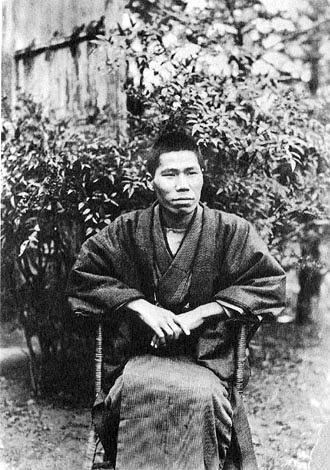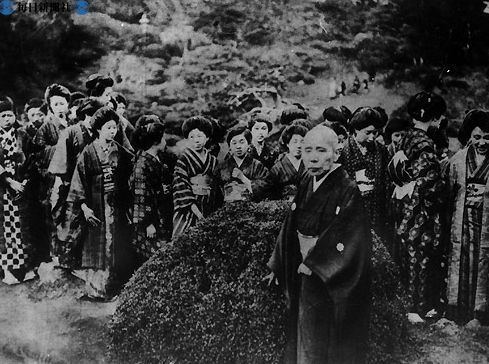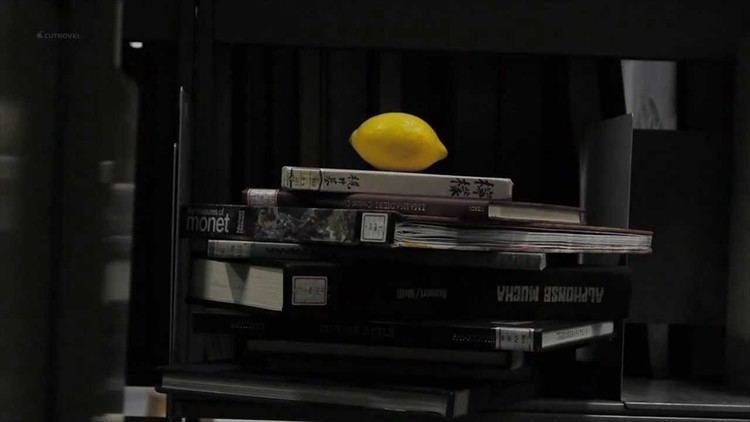Occupation Writer Nationality Japan Name Motojiro Kajii Books Lemon, Remon | Language Japanese Ethnicity Japanese Role Author | |
 | ||
Died March 24, 1932, Osaka, Osaka Prefecture, Japan Similar People Soseki Natsume, Yasunari Kawabata, Osamu Dazai, Naoya Shiga, Tatsuji Miyoshi | ||
Motojiro kajii lemon higuchi cutnovel
Motojirō Kajii (梶井 基次郎, Kajii Motojirō, also Motojirou Kajii, February 17, 1901 – March 24, 1932) was a Japanese author in the early Shōwa period known for his poetic short stories. Kajii left behind masterpieces such as Remon (檸檬, "Lemon"), "Shiro no aru machi nite" (城のある町にて, "In a Castle Town"). Fuyu no hi (冬の日, "Winter Days") and Sakura no ki no shita ni wa (櫻の樹の下には, "Beneath the Cherry Trees"). His poetic works were praised by fellow writers including Yasunari Kawabata and Yukio Mishima. Today his works are admired for their finely tuned self-observation and descriptive power.
Contents
- Motojiro kajii lemon higuchi cutnovel
- Motojiro kajii lemon ozawa cutnovel english
- Childhood and education 19011924
- Early literary career 19241928
- Late career and death 19281932
- Quotes
- References

Despite the limited body of work he created during his short lifetime, Kajii has managed to leave a lasting footprint on Japanese culture. "Lemon" is a staple of literature textbooks. According to a report in major daily newspaper Asahi Shimbun, many high school students have emulated the protagonist's defiant act of leaving a lemon in the book section of Maruzen, a department store chain. The opening line of "Under the Cherry Trees" (Dead bodies are buried under the cherry trees!) is popularly quoted in reference to hanami, the Japanese custom of cherry blossom viewing.

Motojiro kajii lemon ozawa cutnovel english
Childhood and education (1901–1924)

Kajii was born in Osaka in 1901. He attended primary school in Tokyo from 1910 to 1911, middle school in Toba from 1911 to 1913, and Osaka Prefectural Kitano High School from 1914 to 1919. In September 1919, Kajii entered Kyoto's Third Higher School (Kyoto-Sanko, a junior college. While a student there in 1920, he was diagnosed with pulmonary tuberculosis.
Early literary career (1924–1928)

In 1924, Kajii entered Tokyo Imperial University, where he studied English literature. Shortly, he planned for publish a literary coterie magazine Aozora (青空, "Blue Sky"), with his friends from high school.

In 1925, Remon (檸檬, "Lemon") was published in Aozora first issue.
After relinquished a graduation, Kajii had been stayed in Yugasima (湯ヶ島, "Yugasima Onsen") on the Izu Peninsula between 1927 and 1928, hoping to recuperate. During that time, he visited the writer Yasunari Kawabata, whom he befriended. The two writers would play go together several times a week.
After Aozora ceased publication in 1927, Kajii's works appeared in Bungei Toshi (文藝都市, "The Literary City"), another literary coterie magazine.
Late career and death (1928–1932)
In September 1928, Kajii returned to Osaka, where he spent a period of convalescence at home.
Sensing his impending death, friends including the poet Tatsuji Miyoshi and Ryūzō Yodono decided to publish his first book, a collection of his short stories titled Lemon in 1931.
In 1932, he wrote his first novella, titled Nonki na kanja (のんきな患者, "The Easygoing Patient"). Its publication in Chūōkōron, which had commissioned the work, was Kajii's first in the commercial magazine.
On March 24, 1932, Kajii died of tuberculosis at age 31.
